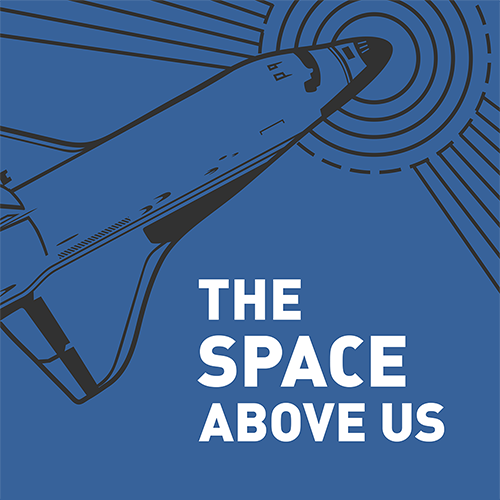Episode 146: STS-69 - Who Let the Dogs Back Out (Wake Shield Facility 2)
Table of Contents
Endeavour is back on the launch pad with two payloads to both deploy and retrieve. One of those payloads looks a whole lot like a gigantic frisbee, something that would be sure to get the attention of any dog (or dog crew) nearby.
Episode Audio #
Photos #
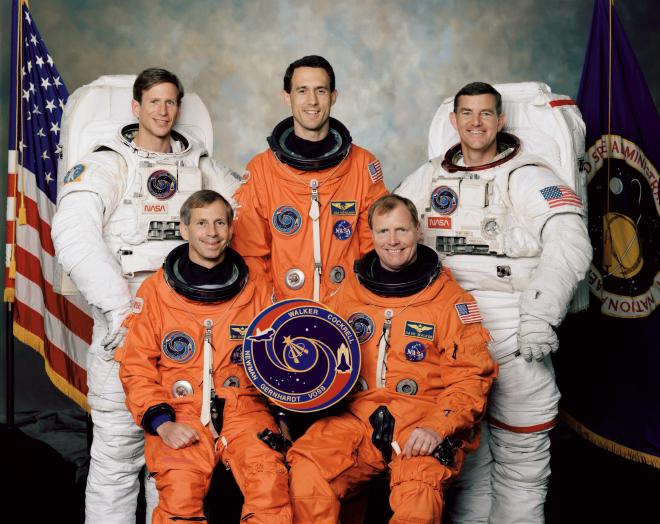
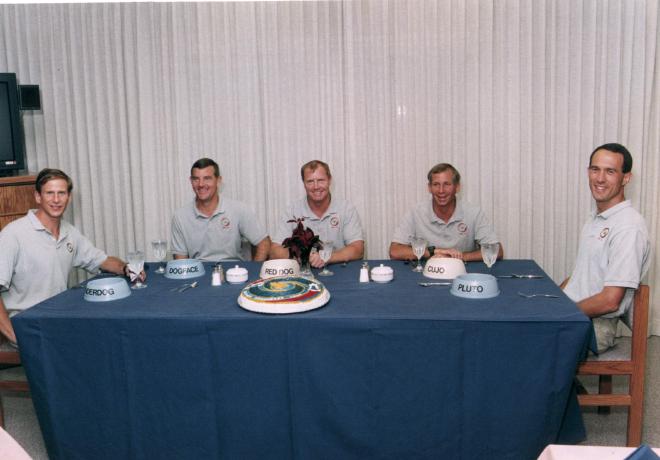
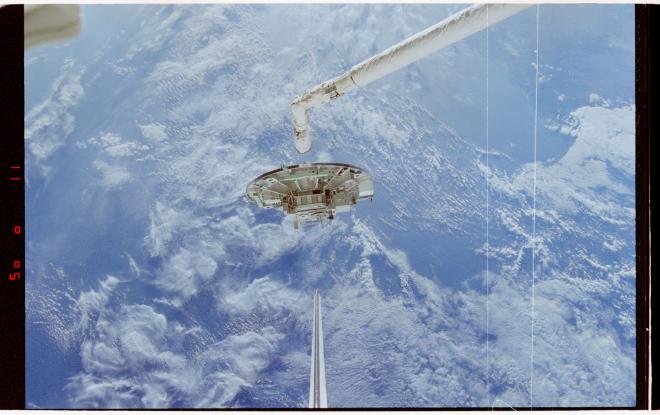
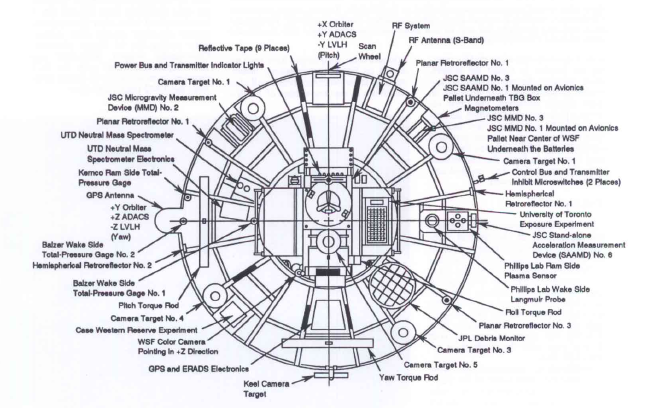
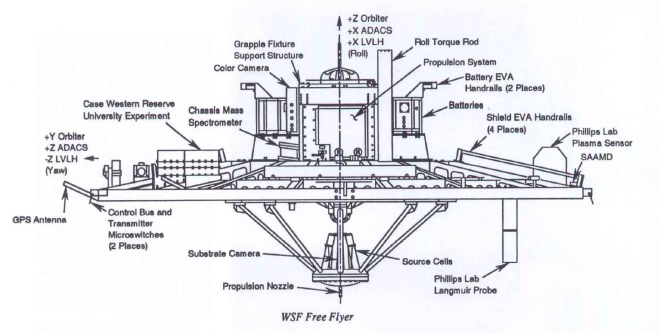
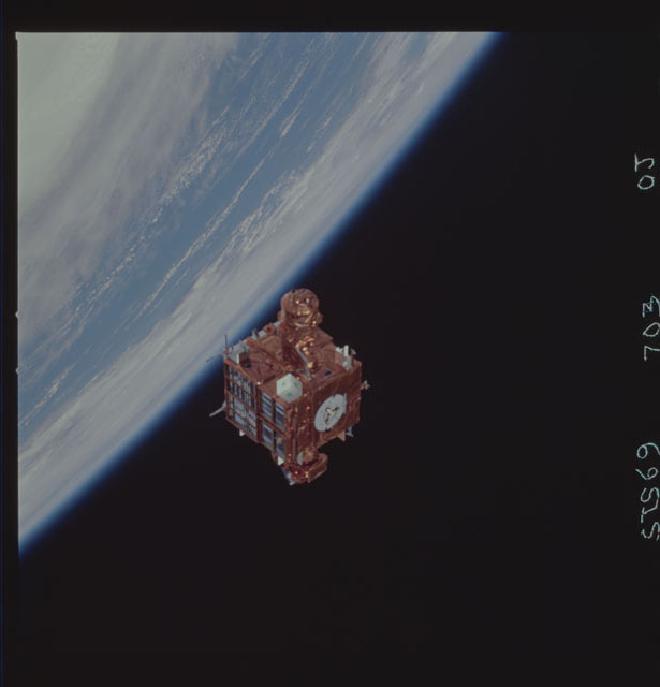
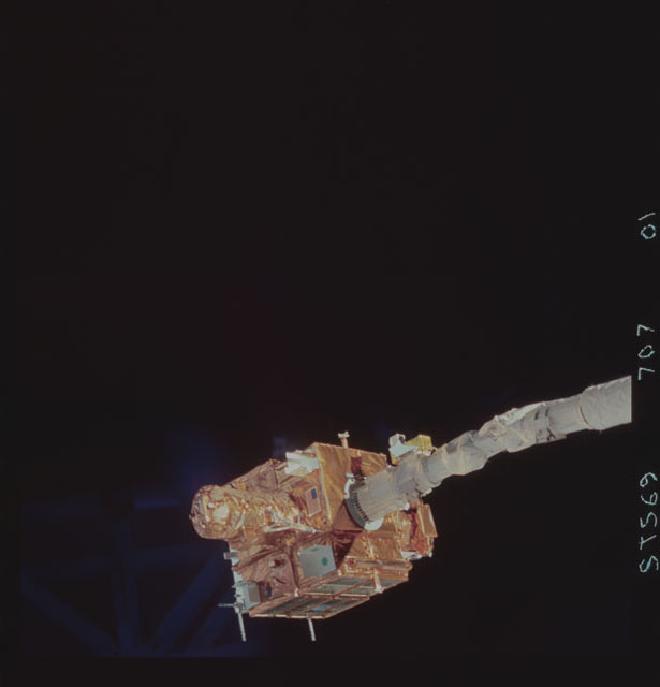
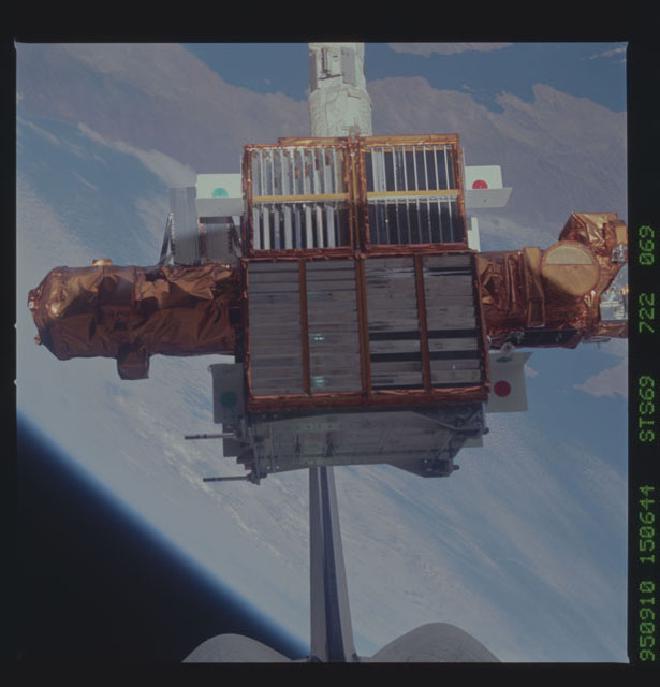
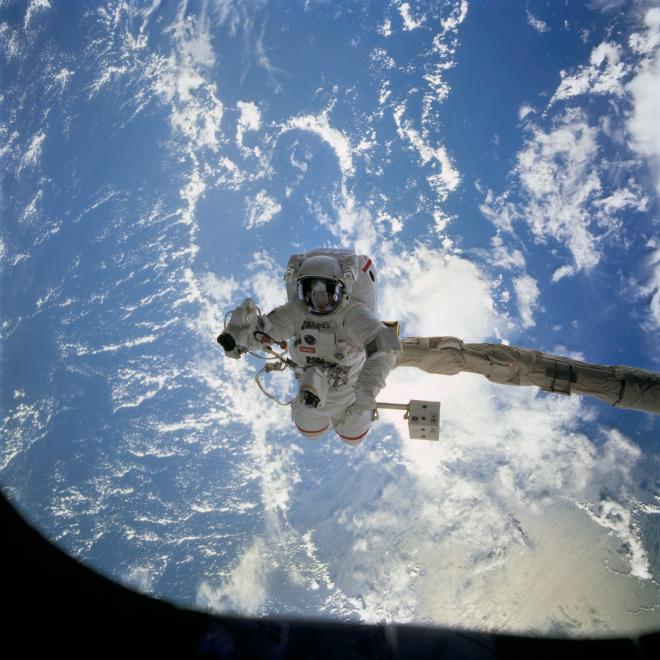
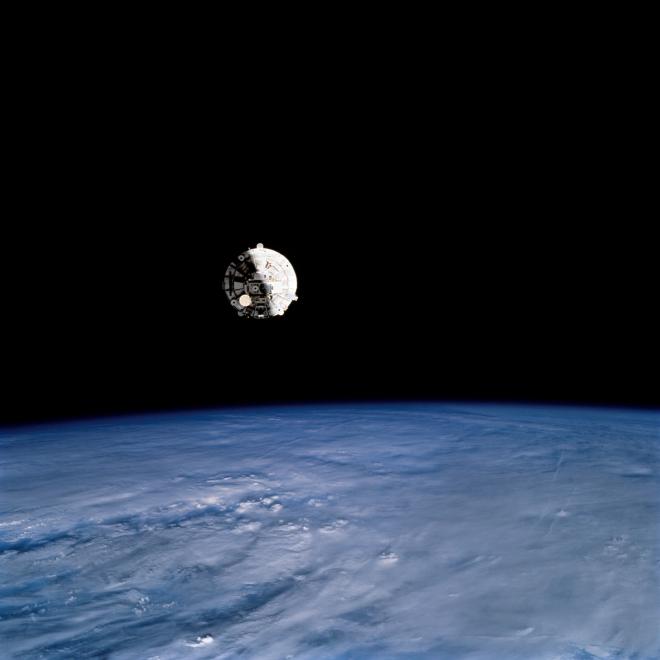
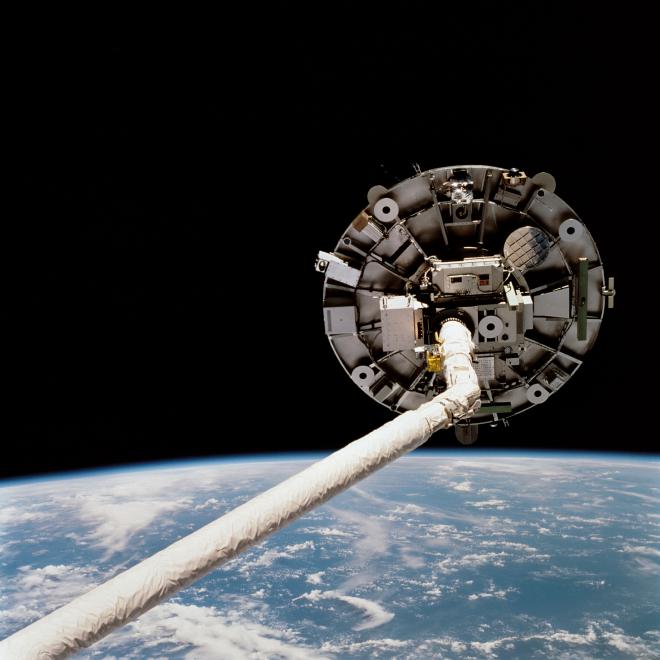
For more photos, head over to our friends at Wikiarchives.space: https://wikiarchives.space/index.php?/category/866
Post-Flight Presentation #
If you’d like to see the mission in motion you can check out the post-flight presentation here:
Transcript #
NOTE: This transcript was made by me just copying and pasting the script that I read to make the podcast. I often tweak the phrasing on the fly and then forget to update the script, so this is not guaranteed to align perfectly with the episode audio, but it should be pretty close. Also, since these are really only intended to be read by myself, I might use some funky punctuation to help remind myself how I want a sentence to flow, so don’t look to these as a grammar reference. If you notice any egregious transcription errors or notes to myself that I neglected to remove, feel free to let me know and I’ll fix it.
Hello, and welcome to The Space Above Us. Episode 146, Space Shuttle flight 71, STS-69: Who Let the Dogs Back Out?
Before we start, I’m going to sneak in a couple of quick housekeeping messages! I usually avoid doing these because they tend to break the flow, but it also seems like a good idea to include them every once in a while in case someone does something crazy like not starting at episode one. So! If you’d like to send me a message to correct something, critique something, or just say hi, I can be reached via email at jp@thespaceabove.us. At the time of this writing, I’m also active on Twitter with the username @spaceaboveus, but no promises if you’re listening to this later. If you’d like something a little more interactive, there is a The Space Above Us Discord with a pretty active little community. It’s gonna cost you, but not much. If you head on over to patreon.com/TheSpaceAboveUs you’ll see that a dollar a month gets you access to the chat, while higher tiers get you access to stuff like movie commentaries, a monthly voice chat, and at least one episode to a crazy thing where I made an entire off-topic podcast episode from start to finish in two hours. I should also mention, since I have been asked, that if you just want to do a one time donation, there is a PayPal link at thespaceabove.us. Pushing the donation stuff always makes me feel dirty, but hey, gotta pay for space books somehow. Of course none of that is necessary and the show will always be free, so don’t sweat it if you’re not interested. That said, even if you’re not interested in the Patreon, you can still do me a huge favor by leaving a nice review on Apple Podcasts or whatever service you use to listen to the show. Positive reviews help me pull in more listeners, which helps me share these lesser known old missions with more people, which is the whole point of the show. Plus they make my mom smile. OK, on with the show.
Last time, we talked about the all-Ohio (asterisk) flight of Space Shuttle Discovery on STS-70. With that flight, we deployed the last of the first generation TDRS satellites, did a bunch of middeck science, and learned the merits of plastic owls. Plus, I forgot to mention it, but STS-70 was also notable for launching only six days after the previous mission landed. One source stated that it was the shortest such gap of the entire shuttle program, but I’m too lazy to go check every landing-to-launch gap, so I’ll just say that it sounds pretty impressive to me. Today’s mission won’t have quite as fast a turnaround, but much like STS-70, STS-69 is a lesser-known mission that nevertheless accomplished a great deal.
That’s because on this mission, we’re going to be deploying and retrieving two major payloads. I thought it was curious that the press kit and several other sources pointed out that this was the first shuttle mission to deploy and retrieve two satellites, since we know that that’s not quite accurate. Way back on STS-51A, we deployed Anik D2 and Syncom-IV-1 while also managing to scoop up the stranded Palapa B2 and Westar 6 for a safe return to Earth. Though I guess it’s fair to say that this will be the first time we’ve deployed two payloads and retrieved those same two spacecraft. Ahh, I love splitting hairs on space trivia. Also, before we move on, can I just point out how wild STS-51A feels now? This was a space shuttle mission that not only launched two fully commercial communications satellites, but also went out of their way to rescue another two at the behest of the insurance company that had come to own the ailing spacecraft. I sometimes wonder about an alternative timeline with a hyper-commercialized NASA operating a fleet of orbiters and paying for itself but.. well.. let’s not too derailed. We’ve got a mission to cover.
Commanding this complex mission was someone who has been weaving his way through our narrative for quite some time now: Dave Walker. It’s interesting that Walker happened to be the Commander for this flight since it turns out that his first flight was none other than.. STS-51A! He just loves multiple spacecraft retrievals. We most recently saw Walker commanding STS-53, which had a bunch of unclassified DoD payloads, and maybe sent a classified communications satellite to GEO. This is Walker’s fourth and final flight, before retiring from NASA. Among his post-astronaut jobs, Walker is listed as a consultant on space technology for the 1998 film Deep Impact. No word on if he continued to attach discarded airplane parts to his car.
Joining Walker up front was STS-69’s pilot: Ken Cockrell. When we last saw Cockrell he was the pilot of STS-56, which carried the ATLAS-2 suite of instruments in the payload bay. Also in the payload bay was the free-flying SPARTAN-201 platform, which was enjoying its first trip into space. As we’ll see in a bit, Cockrell and SPARTAN-201 are reunited on this flight: SPARTAN’s third, and Cockrell’s second of five.
Sitting behind Cockrell on the right side of the flight deck was Mission Specialist 1 and Payload Commander, Jim Voss. Voss is also a frequent flier, with this being his third mission. The last time we saw him was actually alongside Walker back on STS-53, and we’ll fly with him two more times across his five-mission career.
Sitting to Voss’ left, peering over the shoulders of Walker and Cockrell was today’s Flight Engineer and Mission Specialist 2, Jim Newman. When we last saw Newman, it was through the shower of unexpected debris emanating from the ACTS/TOS deploy on STS-51 that we heard so much about from Dan Tani. I can promise less shrapnel in the payload bay for this flight, which is Newman’s second of four.
Finally, rounding out the crew, and riding to space all on his own down on the middeck, was our lone rookie on today’s flight, Mission Specialist 3, Mike Gernhardt. Michael Gernhardt was born on May 4th, 1956, in Mansfield, Ohio. So clearly he just launched one mission late. Gernhardt earned a Bachelor’s degree in Physics from Vanderbilt University while simultaneously starting his first career: professional deep sea diving. He performed over 700 deep sea dives, working on construction and repair projects. Along the way, he earned a Master’s and Doctorate in Bioengineering from the University of Pennsylvania. As part of his studies he developed a new theoretical decompression model based on tissue gas bubble dynamics. If you’re thinking “wow, deep sea diving sounds pretty analogous to the work astronauts do” then Gernhardt is right there with you. After rising to the rank of Vice President of Special Operations at his diving company, he convinced the board to make a spin-off company dedicated to developing deep sea telerobotic equipment for use on the then-planned Space Station Freedom. In 1992 he took things one step further and accepted NASA’s invitation to join the astronaut corps, and this is his first of four flights.
If you can recall the details of the STS-53, you might remember one of the stranger details. For reasons that are not entirely clear to me, Commander Walker dubbed them the “dog crew” and proceeded to give the entire crew dog-based nicknames. The details get even weirder from there but you can go back and listen to episode 124 if you want to revisit them. Here’s the thing though.. not only is Dave Walker back with this flight, so is fellow dog-crew member Jim Voss. So I think you know where this is going. We’re going to be flying.. with Dog Crew 2. The exciting sequel to Dog Crew.
Alright, so, re-introducing the crew, we’ve got Commander Red Dog, Pilot Cujo, MS1 Dog Face, MS2 Pluto, and MS3 Underdog. So far this sounds like a fun and pretty normal bit of team camaraderie, but hang on, I’m not done. They made their own alternate mission patch where the orbiter was turned into a big dog house. On the morning the crew were awoken for their flight, they ate their breakfast together.. out of dog bowls. When the crew walked out of the Operations and Checkout building, on the way to the Astrovan, it was to the sounds of woofs and barking, provided by the press and NASA staff! And among the wakeup calls played over the radio to get the crew’s days started we find: Hound Dog by Elvis Presley, the theme song from Scooby Doo, Cockrell’s five year old daughter singing Bingo (as in “is his name-o”), the theme song to Rin Tin Tin, the theme song to Underdog, a song from Lady and the Tramp, and finally, Snoopy’s Theme. Clearly, Dave Walker and his crew were fans of the philosophy that if it’s worth doing, it’s worth overdoing.
The dog crew were going to have to be patient though, because we’re going to have to get through several launch delays. First, when Hurricane Erin lined up a crash course through central Florida, Endeavour was rolled back to the Vehicle Assembly Building to ride out the storm. A week later, it made the trek back out to the pad. But once there, a new problem was discovered.
n familiar and alarming issue had been found on the previous two flights: minor o-ring damage in the solid rocket boosters. In this case, small gaps in the insulation in the nozzle joint had allowed the hot combustion gases inside the SRB to just lightly touch the primary o-rings and cause some minor singing. From what I can tell, this truly wasn’t that big of a deal, but it also couldn’t be ignored. An improved insulation was planned to fly starting a few missions from now, but in the meantime, both SRB nozzles for STS-69 were disassembled and the insulation was repaired, just in case. At the flight readiness review, the mission managers and the crew considered the risks, considered what had been done to mitigate those risks, and decided to go ahead with the launch.
I thought that was pretty interesting because that’s exactly what we would have expected on STS-51L. But unlike the crew of STS-69, the crew of STS-51L and most of the upper level management were never informed about the added risk they were taking. This time, with the crew and top level management in the loop, things were done right, and the decision was made to go ahead and fly with the old insulation. And spoiler alert, the SRBs are going to be just fine.
With the SRB nozzles fixed, there was just one more obstacle to launch. Before propellant loading began on their first launch attempt, high temperatures were noted at the condenser exit for Fuel Cell 2. As we’ve learned, the fuel cells are critical hardware, providing electricity to the orbiter, and they’re not going to mess around with them. So the launch was further delayed by one week so Fuel Cell 2 could be replaced.
Finally though, launch day arrived, and Dog Crew 2 was ready to go. Fresh from their dog bowl breakfast, the crew suited up, waved to the people barking at them on the way to the van, and drove out to their launch vehicle. One last little issue tried to hold the crew up, when the hatch failed a leak check. But a quick cleaning settled that problem. So on September 7th, 1995, at 11:09 am, right on time, STS-69 lifted off. Watching the launch footage in the post-flight presentation, one of the crew members provided commentary and said quote “Main engines starting up, and the vehicle twanging forward on the launchpad, and five screaming young men, heading off to orbit.”
The ascent was uneventful, other than some pretty picturesque condensation sheaths that formed around the vehicle as it approached and passed through the speed of sound. Also, apparently the answer to “who’s a good boy” is “Dog Crew 2” because as they settled in for their stay on orbit, the crew opened a freezer used for storing experiment samples and discovered eight Dove ice cream bars! Though I have to wonder who decided to give them a number that wasn’t divisible by five..
Other than the usual cabin reconfiguration, opening the payload bay doors, stowing the pressurized suits, and so on, the first task was to deploy the SPARTAN payload. Specifically, this was the SPARTAN-201 platform, which is flying for the third time. SPARTAN, again, is the free-flying spacecraft with the delightfully overwrought acronym: Shuttle Pointed Autonomous Research Tool for Astronomy. In appearance, SPARTAN is a big box covered in gold foil. In function, it provides researchers with a relatively cheap and simple method for flying instruments in space, if only for a few days. 24 hours and 33 minutes into the mission, rookie Mike Gernhardt, aka Underdog, released SPARTAN from the end of the remote manipulator system and the little spacecraft was free to begin its mission. To save on cost and complexity, SPARTAN has no communication system, so to express to the crew that all was well, it did a little wiggle motion. This both indicated that the onboard computer was running and that it did indeed have the ability to change its attitude. Endeavour gently backed away from SPARTAN and it was free to begin its job for this mission: gathering data on the sun and trying to better understand its mysterious outer atmosphere, known as the corona.
Pouring out of the sun at all times is a stream of charged particles known as the solar wind. This solar wind is part of what we call “space weather” and can have a major impact on orbiting spacecraft, and if things get crazy enough, life on the ground. The corona was thought to play an important part in the generation of the solar wind but its precise role was uncertain. This SPARTAN mission was the latest effort to figure out just what was going on.
We’ve covered the instruments on this particular SPARTAN a couple of times now so I don’t belabor the point, but it’s worth a quick refresher. One instrument, the White Light Coronagraph, placed a little mechanism between the sun and an onboard sensor in order to block out the main body of the star while leaving the corona visible. The corona is always there, but it’s impossible to see from the Earth except under very specific conditions. Even if you were to block out the sun itself, the light scattering in the atmosphere would be too bright and the corona would remain invisible. Just on a side note, I’ve actually seen the corona, courtesy of the total solar eclipse that swept across North America in 2017. And I’ve got to say, despite anticipating it for months, seeing endless videos and photos of it, knowing the exact second it would happen, and with a full understanding of what was physically going on.. it was still freaky as hell. I can’t imagine what it was like for thousands of years ago who had no idea what was going on. In any case, with no pesky atmosphere to scatter light, SPARTAN would be able to enjoy this freaky view for the entire sunlit portion of its flight.
SPARTAN’s other instrument, the Ultraviolet Coronal Spectrometer, broke down the light from the corona and allowed scientists to figure out all sorts of stuff about what was happening in it. What chemicals are there, how fast are they moving, how much of it is there, and so on.
So far all of this is pretty much identical to the other times we’ve seen SPARTAN fly, but this time, SPARTAN wasn’t working alone. It was actually backing up another spacecraft we’re familiar with: Ulysses. We saw Ulysses deployed five years ago back on episode 107, when we covered STS-41. The solar probe was sent out to Jupiter so it could take advantage of the gas giant’s mass and hurl the probe into an orbit nearly perpendicular to that of the rest of the planets. This enabled it to look at something no human or spacecraft had ever seen before: the north and south pole of the sun.
When Ulysses passed under the south pole of the sun in 1994, it discovered fast solar wind emanating from holes in the corona, along with a whole bunch of other heliophysics details that I don’t understand. Now, in 1995, it was passing over the north pole of the sun. And at the same time that Ulysses looked down from above, SPARTAN would be peering at the sun from Earth. Their combined observations would help to shed new light on our favorite incandescent ball of hydrogen.
A couple of days later, Endeavour returned to retrieve the boxy spacecraft, and discovered a potential problem. SPARTAN was rotated such that its grapple fixture was 180 degrees away from what was expected, and the spacecraft seemed to be in an inertially fixed attitude (that is, its orientation remained constant with respect to the stars, not to the earth). This was a problem since the crew of Endeavour had to do some extra maneuvering in order to reach the out-of-position grapple fixture, and also because it seemed to indicate that SPARTAN had experienced a problem and gone into safe mode, potentially missing valuable data. Well, the crew were able to retrieve SPARTAN after all, and later review found that over 95% of the desired data had been recorded. I wasn’t actually able to find any followup on what exactly had happened and if SPARTAN was, in fact, in safe mode, but I guess with the spacecraft and data safe we can leave that to the engineers at Goddard to deal with. It was flight day four and already, STS-69 had checked the box next to one of their primary objectives.
Attention next turned to the second primary payload for this mission, one that any dog (or Dog Crew) would be excited to see: a gigantic frisbee. The frisbee was about 3.6 meters across and weighed about 2000 kilograms and wasn’t actually a gigantic frisbee, it just looked like one. It was, in fact, the Wake Shield Facility back for its second flight.
We first met the Wake Shield Facility back on STS-60, which we talked about on episode 134. I went more in depth about the goals of the WSF in that episode, but briefly, the goal here was to create an ultra-vacuum to facilitate epitaxy. Let’s start with that last one first. Epitaxy is the process of building up a layer of material one atomic layer at a time. You can kind of imagine it like painting a wall by using a rapid-fire paintball gun and tracing over the entire surface, ball by ball, layer by layer. But instead of paintballs, it’s individual atoms. If you did this with paintballs, you’d probably just make a giant mess, but if you do it with atoms, you get ultra-pure layers of materials that are useful when constructing advanced computer chips. That’s epitaxy.
The problem is that without a really good vacuum, stuff is gonna get in the way. Stubbornly sticking with this weird paintball analogy, it’d be like trying to paint your wall with paintballs in a room that’s filled with confetti. The paintballs are going to hit the confetti and get deflected. The confetti is going to get into the paint layer and get stuck in there, breaking the pattern. In this analogy, the paintballs are still atoms and the confetti is, well, other atoms. Atoms we don’t want.
It’s possible to pull a pretty good vacuum in a laboratory on earth, but you can only get so good. If you head up to space, you can rely on nature to provide an even better vacuum. But as we’ve learned, there are still plenty of atoms whizzing around in low earth orbit. But if you stay tucked in right behind something that’s flying through space, that something will push all those atoms out of the way, leaving a super empty space behind it: an ultra-vacuum. The last time we talked about this, I compared it to driving down the highway in the rain, while holding an umbrella into the direction of travel. Even with the rain falling straight down, there would be a zone behind the umbrella that stays dry since you’re driving forward so fast. That’s the Wake Shield Facility. Point the front in the direction of travel to push the atoms out of the way, and put the epitaxy stuff on the back in the ultra-vacuum.
Last time, we never really got to test out the WSF properly, thanks to some attitude control issues. The spacecraft is intended to fly on its own, away from the big source of contamination that we like to call the space shuttle, but instead it remained on the end of the robot arm. This was at least partially because the WSF was developed with a new philosophy that saw payloads built for less money and in less time, but by adopting more risk. Not necessarily risk to the crew, but just risk that the darn thing wouldn’t work. And it turns out the darn thing wouldn’t work. So here we are, trying again.
On Flight Day 5, the crew maneuvered Endeavour into a gravity-gradient stabilized attitude. That is, they pointed the shuttle such that the Earth’s gravity would continue to keep it pointed in the same direction. This meant that the orbiter’s attitude control thrusters could be turned off. So since they also turned off water dumps, that meant that the diffuse cloud of water and propellant that the orbiter normally flew with would waft away. Next, the Wake Shield Facility was unberthed and pointed in the direction of travel for a few hours. This exposed it to atomic oxygen, which scoured the clean side of the facility, further cleansing it. The actual deploy was delayed by two hours due to some communications issues, but 3 days and 20 hours into the mission, the RMS released the Wake Shield Facility and moved away. And in order to prevent any contamination, we have a first for the shuttle program. Rather than the shuttle using its own thrusters to back away from the payload, the WSF used little nitrogen cold gas thrusters to putt-putt away under its own power. It eventually settled into a stable relative position between 37 and 55 kilometers behind Endeavour and proceeded to get to work.
While the crew kept on eye on the WSF, which appeared to them as a bright star in the distance, controllers on the ground got to work with their new ultra-vacuum facility. Over the next 24 hours, three thin films would be successfully grown on the pristine leeward side of the WSF. But then we start to hit some issues. I love the idea of flying payloads cheaper and faster with more risk, but you gotta remember that that “more risk” is absolutely part of the equation. It’s not entirely clear to me what happened or why, but it seems that as the WSF passed through orbital noon (that is, the sun was right above it), the attitude control equipment would have some issues and the attitude would wander a bit. It’s unclear to me if this was a consequence of the lighting, the overheating we’ll see later, radio frequency interference or something else, but something was going wrong. To attempt to deal with it, controllers starting putting the attitude control equipment into safe mode during these orbital noon crossings. At one point, however, it seems that the attitude excursions were so bad that the facility did an entire flip. The WSF controllers began slowing operations down to give the equipment time to cool off, and mission controllers gave the payload an extra 24 hours to try to deal with the slower than expected ops.
I want to emphasize that I only have a single oral history from a mission controller on the ground to back this up, but I read an interesting theory as to what was going on. The thought was that the shuttle and its payloads were frequently painted with radar from various countries on the ground. They wanted to keep an eye on what was going on in space anyway, but also, since the details of the shuttle and its payloads were typically public knowledge, it was a good chance to calibrate their equipment. Apparently this strong radar, coupled with the relative inexperience of the team that built the WSF hardware, resulted in radio frequency, or RF, interference that may have contributed to the overheating problem. I’m qualifying that so heavily because to be honest, I have a hard time seeing how the RF could be so bad that it’s literally causing overheating, but it was interesting to think about, so I’ll leave it to you to decide.
With the extra time, the WSF was able to grow one additional thin film, for a total of four, but it still fell short of its goal of seven. And with one of its four batteries running low, it was time for Endeavour to come pick it up, so on flight day six, the crew did just that. As part of the rendezvous, experimental GPS receivers on both Endeavour and the WSF were running. They weren’t being used for navigation yet, but the signals would be analyzed later for potential use on future missions. Well.. that would have been the case but the GPS receiver on WSF never turned on despite multiple attempts. Oops.
During the final part of the rendezvous, with the WSF about 130 meters away, the orbiter crew used it as target practice, performing 14 thruster firings. This was the latest in the ongoing effort to better characterize the effects of thruster plumes coming from the orbiter. The original plan was to do 55 firings, but in light of WSF’s attitude control problems, it was decided to keep things to a minimum. During this final approach, Walker and Cockrell flew Endeavour, Newman and Gernhardt coordinated the plume experiment, and Voss physically kept an eye on WSF and shot video of the approach. Just over three days after it was released, the WSF was grappled on the end of the robot arm, and was soon safely berthed in the payload bay. The next day it would be briefly unberthed again for an experiment that studied how plasma flowed around the big round payload, but it would remain securely attached to the orbiter from here on out.
The low-cost and innovative little spacecraft was proving to be more trouble than expected, but we’ll see it try again a little bit down the road on STS-80.
Before we move on to the last part of the mission, it’s time to hear a name we haven’t heard in quite a while: Scott Carpenter. Of course, we know Carpenter from his flight on Aurora 7, waaaay back in 1962. We covered his flight on episode six of the podcast. Carpenter never flew in space again, but that didn’t mean that his days of exploring extreme environments were over. In a fictional quote that I’m making up right now, he said “if you’re looking for me, you better check under the sea, cause that is where you’ll find me” because in a fact I’m not making up, he got involved with the SEALAB project in the 1960s. In fact, during the flight of fellow Mercury 7 astronaut Gordo Cooper on Gemini V, the two astronauts spoke over the radio, from ocean floor to orbit. Well, today Carpenter would be repeating the feat, but this time calling from NEEMO, the NASA Extreme Environment Mission Operations, located on the under the ocean in the Florida Keys. And instead of talking to Gordo Cooper, he’d be enjoying a quick chat with Mike Gernhardt, who was no stranger to life at the bottom of the sea. It makes me wonder what other exotic locations we can connect in the future. Maybe from surface of the moon to inside a volcano?
Hopefully talking to a spaceflight legend didn’t distract Gernhardt too much, because on flight day ten it was time for the last major goal of the flight: a spacewalk. Yes, this flight was the latest to include an EVA dedicated to getting better at EVAs. Only a select few members of the astronaut corps had ventured outside the spacecraft, and with an entire space station to build in the coming years, it was really important that more astronauts gained that precious experience and that NASA learned more of the do’s and don’ts of spacewalking. So that’s why on flight day ten you would find Pilot Cockrell down in the airlock helping to get Mission Specialists Voss and Gernhardt ready to head outside.
This EVA is really busy but it’s sort of easy to miss that fact since it consists of a whole bunch of pretty small tasks. One important objective hearkens all the way to Gemini XII: a task board. Most of what crews constructing the space station would be doing is connecting and disconnecting electrical cables, fluid conduits, handrails, micrometeoroid shield paneling, stuff like that. So, in Endeavour’s payload bay were.. electrical cables, fluid conduits, handrails, micrometeoroid shield paneling, stuff like that. The crew would try out the various equipment using different tools and see what worked and what didn’t. Of course, this would’ve all been done to death on the ground, but nothing beats trying it in the actual spaceflight environment.
While they were at the task board, they’d also be evaluating some new types of tethers. As we’ve seen on numerous flights, a major problem with performing a spacewalk is the ol’ equal and opposite reaction. Gets you every time. If you’re trying to turn a tool or open a door or move something around, your body is going to experience an opposing force. And with no frictiony ground to hold you in place, you’re going to move. We notably saw this when Hoffman and Musgrave were trying to close the doors on the Hubble Space Telescope and struggled for hours, all for want of a third hand. Well, a new body restraint tether would provide this third hand. By clipping the tether to their work site, it would gently hold them in place, freeing both hands to focus on their work. I’m not sure I’ve seen these tethers in use these days, but I can tell you that the crew of STS-69 thought they were pretty useful.
Another important test would be a repeat of one we saw just recently: evaluating thermal conditions away from the payload bay. It seems counterintuitive thanks to the lack of air, but the environment in the payload bay is much warmer than the environment just outside the orbiter. This seems weird at first, but think of one of those shiny reflector things that sun-bathers use to get a tan. The sunlight hits the reflector and gets bounced to the center, where you’d be able to feel the extra warmth with your hand, or get a super tanned face. Well, sunlight hitting the cylindrical payload bay would do something similar. But when crews were out among the trusses and modules of the space station, they would be exposed to deep space, which would be much colder.
With this in mind, the crew now sported some fancy heaters in their gloves, a valve that disabled the cooling water that ran through tubes all around the inside of the suit, and what seem to just be high quality off the shelf socks. Voss and Gernhardt tried the new thermal equipment both down in the payload bay and while hanging out on the end of the robot arm in open space. After hanging from the end of the robot arm for 45 minutes one of them commented that the view was exceptional.. and I believe them. After spending 6 hours and 46 minutes gathering critical information for the spacewalks to come, Voss and Gernhardt came back inside. Gernhardt later compared his first EVA to his deep sea dives. He said that one obvious difference was visibility. Near the bottom of the ocean you can barley see a few feet, while from his new lofty vantage point he could see for thousands of miles. Another difference was that instead of the ocean pressing in on him, his suit’s air was pushing out on the universe. The result was the balloon effect that we’ve talked about before, where the suit sort of wants to spring back to its default position. All in all though, I think it’s safe to say that Gernhardt enjoyed his time in his latest extreme environment.
The EVA also marks the 30th spacewalk performed from the shuttle.. maybe. It’s the 30th official one but rumors abound about a potential contingency EVA on one of the classified DoD missions, with the goal being to help deploy a stuck payload appendage, so who knows. Maybe someday we’ll get to find out.
And with that, the mission was pretty much wrapped up. There was the usual bundle of middeck experiments that I won’t bother going through, though for once I don’t think there were any crystals. At one point the waste collection system dump valve got all clogged up so the crew got to fall back on some training I’m sure they would have preferred to leave in the classroom, and reroute the waste water to a contingency tank. In the post-flight presentation one crew member commented “Underdog found out why plumbers make so much money.” But all in all, there were no significant issues from the orbiter.
And Endeavour wasn’t the only thing that was cooperating. For once, the Florida weather was nice and clear, so on the first scheduled attempt, the crew were able to complete their deorbit burn and sail through an uneventful reentry before touching down at the Kennedy Space Center. Total mission duration was 10 days, 20 hours, 28 minutes, and 56 seconds. In that time, scientists gained new insight to back up the observations from Ulysses, the Wake Shield Facility got another bite at the apple (and did manage to finish a few test runs), NASA’s big EVA plans for the space station gained a firmer foundation, and scientists from all over the world saw their experiments fly as secondary payloads. Not a bad little mission. Good boys, Dog Crew.
Next time.. if STS-73 launched right as this episode came out, by the time the next episode came out they’d still have nearly two full days left in space. I hope you’re ready to be in it for the long haul and get some science done on the US Microgravity Laboratory 2!
Ad Astra, catch you on the next pass.
